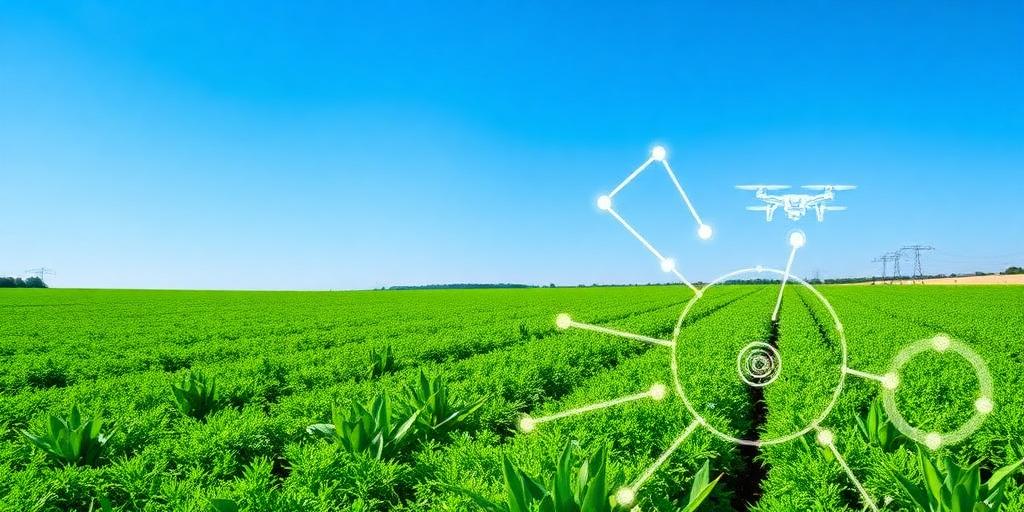The agricultural sector, historically reliant on manual labor and traditional methods, is undergoing a profound transformation driven by the Internet of Things (IoT). This paradigm shift, often referred to as smart farming, integrates advanced sensing, connectivity, and data analytics to optimize operations, enhance productivity, and promote sustainable practices. The real-world applications of IoT in agriculture are extensive, demonstrating tangible benefits across various facets of farm management.
The Foundation of Smart Agriculture: What is Agricultural IoT?
Agricultural IoT leverages networks of interconnected sensors, devices, and machinery to collect real-time data from fields, livestock, and equipment. This data is then transmitted to cloud-based platforms for analysis, providing farmers with actionable insights. The core components include sensors for environmental conditions, GPS technology for mapping, automated systems for irrigation and fertilization, and robust communication infrastructure to ensure seamless data flow. This integrated approach forms the backbone of modern precision agriculture technology.
Key Real-World Applications of IoT in Agriculture
1. Precision Farming and Crop Monitoring
One of the most impactful applications of IoT is in precision farming. Sensors deployed in fields continuously monitor critical parameters such as soil moisture levels, nutrient content, pH, and ambient temperature. This granular data allows farmers to apply water, fertilizers, and pesticides precisely where and when needed, minimizing waste and optimizing resource allocation. For example, IoT crop monitoring systems can detect early signs of pest infestation or disease outbreaks, enabling timely interventions and preventing widespread crop damage. This significantly boosts yields while reducing input costs, a cornerstone of smart farming IoT.
2. Smart Irrigation Systems
Automated and smart irrigation systems are revolutionizing water management. By integrating soil moisture sensors with local weather forecasts and crop-specific water requirements, these systems can autonomously activate irrigation only when necessary, delivering the optimal amount of water. This conserves vast quantities of water, a vital resource, and reduces energy consumption associated with pumping. This is a prime example of efficient agricultural IoT solutions.
3. Livestock Management and Tracking
IoT devices are increasingly utilized in livestock farming to monitor animal health, welfare, and location. Wearable sensors on animals can track vital signs, activity levels, and reproductive cycles, alerting farmers to potential health issues or changes in behavior that may indicate illness. GPS-enabled tags facilitate livestock tracking IoT across vast pastures, preventing loss and streamlining herd management. Automated feeding systems, controlled by IoT, ensure precise feed delivery tailored to individual animal needs, enhancing growth and productivity.
4. Automated Farm Operations and Robotics
Beyond monitoring, IoT underpins the automation of various farm tasks. Drones equipped with multispectral cameras provide aerial imagery for comprehensive field analysis, identifying variations in crop health, irrigation patterns, and soil conditions. Autonomous tractors and harvesters, guided by GPS and sensor data, can perform tasks with unprecedented precision and efficiency, reducing labor costs and human error. These advancements represent the cutting edge of agricultural automation.
5. Supply Chain Optimization and Traceability
IoT extends beyond the farm gate to enhance agricultural supply chain transparency and efficiency. Sensors can track environmental conditions during transit, ensuring perishable goods maintain optimal quality. Blockchain technology, often integrated with IoT data, provides end-to-end traceability of produce from farm to consumer, ensuring food safety and authenticating origin. This provides consumers with greater confidence and helps reduce food waste throughout the supply chain.
Benefits and Future Outlook
The integration of IoT in agriculture yields substantial benefits: increased operational efficiency, reduced resource consumption (water, fertilizer, pesticides), improved crop yields and quality, enhanced animal welfare, and greater profitability. While challenges such as initial investment costs, data security, and rural connectivity remain, the trajectory for agricultural IoT is one of significant growth. Continuous innovation in sensor technology, artificial intelligence, and network infrastructure will further expand the capabilities of smart farming, positioning it as a critical pillar of global food security and sustainable agricultural practices for the foreseeable future.









